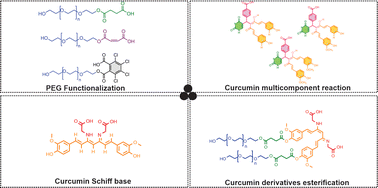Mechanochemical method: a powerful tool to obtain ω-poly(ethylene glycol)-functionalized structures and curcumin analogues†
Abstract
This work reports the mechanochemical synthesis of organic compounds involving carbon–carbon (C–C), carbon–nitrogen (C–N), and carbon–oxygen (C–O). The solid-state synthesis of ω-poly(ethylene glycols) functionalized with different cyclic anhydrides and the obtainment of curcumin Schiff bases and curcumin multicomponent derivatives are also reported. The mechanochemical method was also used in the Steglich esterification using curcumin derivatives. 1H NMR, 13C NMR, MIR, XRPD, and HPLC techniques were performed to confirm the synthesis of each compound.



 Please wait while we load your content...
Please wait while we load your content...